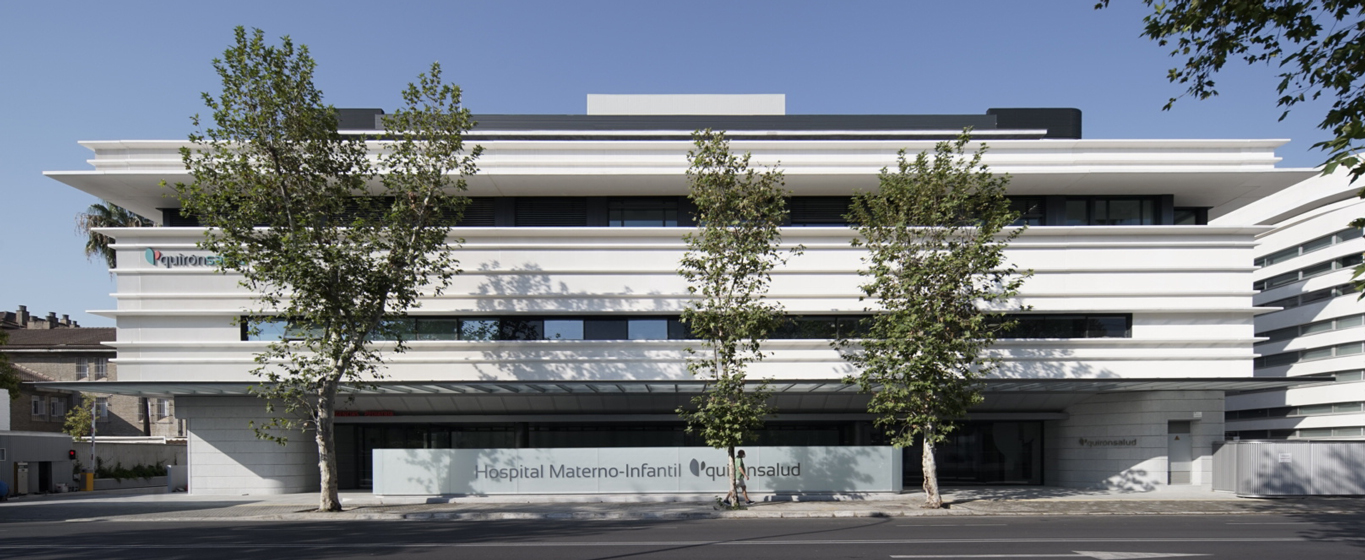Facial Paralysis
Are there different types of facial paralysis? Everything about its causes, symptoms, and treatments.
Symptoms and Causes
Facial paralysis is the loss of movement in the face. This condition exclusively affects voluntary muscles, meaning reflex reactions remain intact, and it occurs due to a failure of the facial nerve.
Facial paralysis can be total or partial, depending on whether the movement is completely lost or if there is only muscle weakness. Based on its etiology, it is classified into two different types:
- Peripheral facial paralysis: The facial nerve is damaged, preventing movement in all the muscles on the affected side.
- Central facial paralysis: This occurs due to a brain-level injury (not a nerve-level one), caused by damage to the fibers connecting the facial nerve with the cerebral cortex. It affects the muscles in the lower part of the face (cheeks and mouth) on the opposite side of the lesion.
When it occurs in isolation, it usually resolves over time with proper treatment. Additionally, it is not common for it to appear more than once. If facial paralysis is caused by another underlying condition, it is necessary to address the underlying disease, and the prognosis varies.
Symptoms
The most common symptoms of facial paralysis include:
- Lack of mobility on one side of the face or in the lower area. Typically, there is difficulty raising the eyebrow, closing the eyelids, or smiling.
- Facial asymmetry.
- Increased sensitivity.
- Excess or lack of tear and saliva production.
- Altered sense of taste.
- Difficulty breathing through the nose.
- Sometimes, cold-like symptoms appear in the days preceding the paralysis.
Causes
Facial paralysis occurs due to damage to the facial nerve, which can result from different causes that classify the condition into three types:
- Bell’s palsy or idiopathic facial paralysis: The exact causes are unknown, though it is often associated with facial nerve inflammation due to a viral infection (typically herpes simplex). Less frequently, other viruses may be involved.
- Secondary facial paralysis: Less commonly, facial paralysis results from trauma or systemic diseases such as diabetes, sarcoidosis, or autoimmune syndromes.
- Congenital facial paralysis: Although rare, it can be a consequence of Möbius syndrome, a congenital neurological disorder.
Risk Factors
Although much of its nature remains unknown, studies indicate a higher likelihood of developing facial paralysis under the following circumstances:
- Third trimester of pregnancy
- First week postpartum
- Upper respiratory tract infection
- High blood pressure
- Diabetes
- Obesity
Complications
Facial paralysis rarely leads to complications, as the nerve typically regains function within four to six weeks. However, in some cases, it can result in:
- Some degree of permanent paralysis in the affected muscles
- Synkinesis: Certain muscles involuntarily activate when attempting to move others due to irregular nerve fiber regrowth
- Irreversible nerve damage
- Corneal ulcers and vision loss when an eye cannot close, as excessive dryness erodes the cornea
Prevention
There is no effective way to prevent facial paralysis.
What Specialist Treats Facial Paralysis?
The treatment of facial paralysis involves specialists in neurology, otolaryngology, ophthalmology, and plastic, aesthetic, and reconstructive surgery.
Diagnosis
Facial paralysis is primarily diagnosed through a physical examination, in which the specialist assesses the ability to move facial muscles.
To further investigate the diagnosis, determine the affected structures, and assess the severity of the condition, additional tests may be performed, including:
- Electromyography (EMG): Measures electrical activity in muscles and nerves using a needle connected to a device.
- Schirmer’s test: A filter paper strip is placed inside the lower eyelid while the eyes remain closed for five minutes. The amount of tear production is then measured using the guide on the strip.
- Salivation test: Determines the volume of saliva produced. The patient sits upright with the head tilted forward, collecting the saliva that drips into a container.
- Hearing tests: Assesses hearing ability through audiometry.
- Magnetic resonance imaging (MRI) or computed tomography (CT) scan: Rules out brain damage.
Treatment
It is essential to identify the underlying cause to determine the most appropriate treatment for facial paralysis. The most effective approaches include:
- Medication: Provides good results for idiopathic facial paralysis. It usually consists of a combination of antivirals to eliminate the infection and corticosteroids to reduce nerve inflammation.
- Physiotherapy: Helps restore muscle function and tone through massages and exercises.
- Surgery: Required if the nerve does not recover with previous treatments. There are two types of surgical procedures to reconstruct nerve endings:
- Static surgery: Supports and lifts the facial areas that have drooped due to paralysis. It also facilitates eyelid closure using a weight to prevent corneal damage.
- Dynamic surgery: A more complex approach aimed at restoring muscle movement. If the paralysis is recent (less than 18 months), nerve connections can be re-established. If more time has passed, a muscle transfer from other body areas may be necessary.






























































































